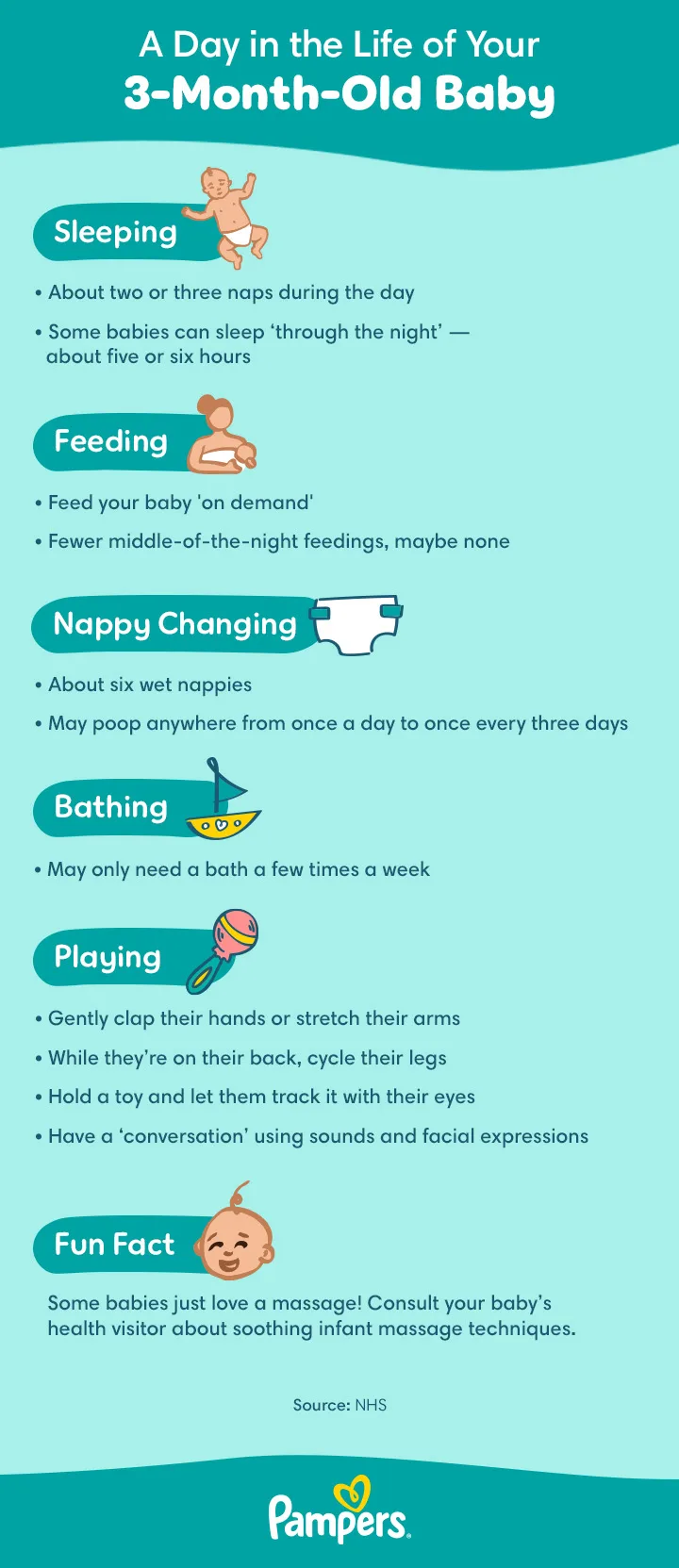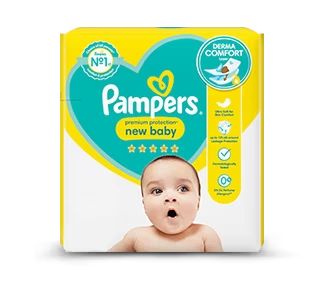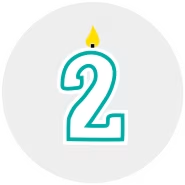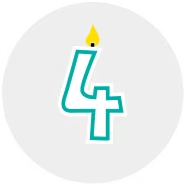3-Month-Old Baby Development: Getting Into a Groove
By around 3 months, your baby is beginning to show exciting signs of early development. It’s natural to wonder what’s typical at this stage and how best to support your little one’s progress. While every baby grows at their own pace, many begin to show milestones such as improved head control, social smiling and greater curiosity about the world around them.
You might notice your baby starting to:
Follow moving objects with their eyes
Bring their hands to their mouth and explore with fingers
Make cooing or gurgling sounds in response to voices
Push up slightly with their arms during tummy time
Show interest in faces and bold colours.
These early skills help lay the groundwork for future movement, communication and emotional connection. In the sections below, we’ll explore common 3-month baby milestones in more detail and share simple ways you can encourage your baby’s development.
Baby Development Milestones for a 3-Month-Old
As your baby grows, they become increasingly aware of their own physical self and the world around them. Take a look at the visual below for a quick overview of the developmental milestones for a 3-month-old. Then, continue reading for more detailed insights into each milestone.
Physical Growth: Average Weight and Height of a 3-Month-Old
By the time your baby reaches about 3 months old, you’ll likely start to notice their growth slowing a little from those very rapid early weeks – and that’s perfectly normal. According to the NHS, your baby’s weight and length will be measured and plotted on the UK‑WHO growth charts to track how they’re growing compared to typical patterns.
It’s important to remember:
• There’s a wide range of healthy sizes and shapes at this age. What matters most is the pattern of growth over time rather than a single measurement.
• Your baby may not be growing by the same amount (in length or weight) as they did in the very first months – growth naturally slows.
• If you ever feel worried – perhaps your baby seems to have dropped centiles or isn’t gaining weight steadily – talk with your health visitor or GP. The charts are tools to spot if further advice is needed, not targets your baby must hit.
A few things to expect
• During the early months, your baby will be weighed roughly once a month until about 6 months if there are no concerns.
• At about 3 months, you might notice your baby’s clothes feeling snugger or their naps and feeds shifting slightly, but that doesn’t necessarily mean anything’s wrong.
• Your health visitor will plot their length/height and weight on the chart and look at whether they’re following their own growth line (centile) rather than comparing them with siblings or other babies.
To help you track your baby’s growth at home, try our Baby Growth Chart.
Movement: Gross and Fine Motor Skills at 3-Month-Old
Around this time, most babies begin to move more deliberately, and you'll likely notice some exciting developments in your little one's motor skills. Your 3-month-old baby is gradually gaining more control over their body and movements. While many of your baby's movements as a newborn were involuntary reflexes, they are now becoming more purposeful.
Your little one may be learning to open and close their hands, bring a hand to their mouth, move their hands together, reach for dangling objects, and hold onto things. You might also see your baby’s eyes tracking objects that are dangled in front of their face.
They may be able to lift their head and chest while lying on their tummy, keep their head centred when lying on their back, and maintain a more or less straight position when sitting (make sure to support your little one’s head while sitting). Additionally, their waves and kicks may become more forceful, and you will notice a lot of wriggling.
You can help encourage your baby’s movement by providing daily tummy time and play. These activities can help your 3-month-old baby with motor development, hand-eye coordination and other important skills.
Cognitive Development: Senses and Communication
There's a lot to discover, and your three-month-old infantis learning to take it all in, bit by bit. As your little one’s vision improves, they are slowly learning to control eye movements, and you might notice that your baby is watching faces more intently. Faces, especially yours, are among their favourite sights.
When it comes to hearing and speech, your baby has already learned to associate your voice with comfort, soothing and love, and turns towards the sound of it. Around this time, your little one also starts to respond to the different tones you use. For example, raising your voice may make your baby cry, while a funny sound might elicit a laugh or excited gurgle.
Your baby might have even progressed from cooing to trying to mimic the sounds you make or your intonation. You might also see that your little one sometimes responds when called by name.
By this stage, your little one’s communication repertoire may also include smiling spontaneously and in response to your smile, imitating your facial expressions, and making a whole range of bubbly or raspberry sounds.
At three months old, your baby might recognise patterns in your speech and be learning how to interact. Watch as your little one shows happiness at your delighted reactions to their babbling and bask in that expression of delight when you sing or read out loud to your baby.
Behaviour and Personality: Your Baby's First ‘Conversations’
Watching your baby's personality emerge is one of the great joys of parenthood.
Have you noticed that your little one is smiling more and responding to your voice? That's great!It's likely that your baby really enjoys playtime with you and others and is now better able to express this enjoyment with their face and whole body. Your baby may even start to imitate some of your movements and facial expressions.
Your little one may now be having ‘conversations’ with you too, made up of back-and-forth exchanges of sounds, smiles and gestures. These little ‘chats’ are not just fun but also help build your baby’s trust in you and boost their self-esteem.
Babies make their needs known in different ways. As a parent, you'll soon get to know these subtle (and not-so-subtle) cues. For example, you’ll be able to tell from your baby’s cries and body language when they are hungry, uncomfortable, or simply bored and need a toy to play with.
Activities and Development Tips to Support Your 3-Month-Old Baby
Follow your GP’s personalised advice when it comes to activities that foster your 3-month-old newborn baby’s development. These will help your little one master the skills needed to roll, sit and hold their head up, and will also help promote cognitive and sensory development. Here are some examples of what you could try:
Practice tummy time. Watching carefully, place your baby stomach-down on an activity mat or blanket for a short time each day (gradually increasing the tummy time periods as they get used to it) so that they gain more control over the legs, arms and head. If your little one doesn’t enjoy tummy time, try lying them on your chest or lap. Remember not to leave your baby in one position for too long.
Promote hand-eye coordination. Encourage your baby to grasp for and explore small objects like toys or your fingers.
Aid visual development. Introduce stimulating colours, patterns and textures for your baby to enjoy in the form of toys, rattles, books, colourful mobiles, comforters and activity mats. You can also try activities like moving an object about 40 cm in front of your little one and letting them follow it with their eyes.
Talk to your baby throughout the day. Talk to your baby and respond to the noises they make by repeating them. Say your baby's name and use simple phrases to narrate what you’re doing when you're together, such as feeding, changing their nappy and bathing them. Respond to your baby when they make faces or gestures to encourage their attempts at ‘conversation’. If you or your partner speak a foreign language, feel free to start using it with your baby.
Consistently provide close physical contact. Hugging or cuddling your baby often can help increase their sense of safety and security. Make sure everyone in the household and other caregivers outside the home provide similar loving care to your baby.
Read to your baby every day. Reading at this early stage boosts your baby’s language development and can help establish a lifelong love for reading and learning. Reading as part of a bedtime routine can also help calm and comfort your little one.
Pay attention to your baby’s cues. Respond to your baby when they let you know that they're hungry, happy, upset or tired. Your loving attention won’t spoil them.
What ‘Should’ Your 3-Month-Old Be Doing?
Life with your baby is full of surprises. While you may not be able to establish a strict routine for your 3-month-old just yet, this guide for feeding, sleeping, bathing, and playing can help bring some structure and enjoyment to each day:
How Much and How Often Should a 3-Month-Old Eat?
What is a good feeding schedule for a 3-month-old? Feedings may become less frequent now that your baby is three months old because they can probably consume more milk at each feeding. Instead of trying to follow a fixed feeding schedule, you could follow a ‘responsive’ pattern of feeding (also called on-demand or baby-led feeding), which involves feeding your baby as often and for as long as they want. Your baby will be content and get all the nourishment they need for growth.
Nappying at 3 Months: Tracking Wet and Dirty Nappies
How many wet and dirty nappies are normal for a baby at 3 months old? In general, you'll know your baby is feeding well when there are around six wet nappies per day. Poos may be more solid now and may also occur less often. In fact, a breastfed baby might go as long as a week without having a poo.
Choosing a nappy that offers both comfort and protection is key.
Pampers Premium Protection New Baby nappies are specially designed to care for your baby’s delicate skin. They’re our softest nappies, with a unique DermaComfort layer that absorbs wetness and mess away from the skin, keeping your little one dry and comfortable. The nappies are hypoallergenic, dermatologically tested, and include a wetness indicator to help you know when it’s time for a change. They’re also trusted by UK maternity wards, so you can feel confident using them at home.
With so many nappy changes at this stage, don’t forget to join the Pampers Club to earn rewards on every pack you buy.
A 3-Month-Old’s Sleep Schedule: How Much Sleep Does Your Baby Need?
At this point, your baby's sleep habits may be going through some changes. Your little one might be able to eat more during the day and so may now require fewer night feeds or none at all. Plus, after being more alert during the day, your baby may be sleepier at night.
What you might find is that your little one takes two or three naps during the day, followed by a longer stretch at night. Although some babies may now be sleeping through the night, it's important to remember that this doesn't apply to all babies and that ‘through the night’ often means a stretch of about five or six hours.
How to Put Your Baby to Sleep
When putting your baby to bed at night or for a daytime nap, follow these guidelines for safe sleep and to reduce the risk of SIDS:
Always lay your baby on their back
Keep your little one in the same room as you, but in their own cot
Dress your baby comfortably for the room temperature
Keep the head and face uncovered
Never put your baby to sleep on a sofa or armchair.
Tips for a Good Night's Sleep
It's a good idea to aim for a consistent baby sleep schedule that suits you both. Try the following tips for a soothing bedtime routine for your 3-month-old.
Establish a routine. Giving a gentle massage or a bath, reading a story, or singing a lullaby are great ways to help your 3-month-old wind down after the day's activities.
Let them squirm. Your baby may need a minute to settle down and get comfortable. It's OK to let them wriggle, babble or even cry a little before nodding off.
Minimise stimulation. If you need to attend to your baby during the night, try to minimise distractions. Keep the lights low and don't talk very much, as this will help keep your little one calm and more likely to drift back to sleep.
Sleep Training
Some parents consider using sleep training methods for their baby to address sleep-related issues such as night-waking or separation anxiety; however, experts recommend waiting until your little one is at least 6 months to try sleep training.
| If you’re considering sleep training but you’re not sure where to start, download the Smart Sleep Coach by Pampers. This easy-to-use app walks you through the sleep-coaching process, includes a sleep-tracking tool that optimises bedtimes and offers effective meditations to help you stay present and positive in frustrating moments. You can get a head start on sleep training today by taking the free sleep assessment. |
Your Baby’s Health
Some health issues you may encounter this month may include:
Diarrhoea. If your baby has loose, watery stools that amount to more than the number of feedings they’ve had that day, let your baby’s doctor know.
Ear infections. Though older babies are more likely to experience ear infections, it's not unknown for a three-month-old infant to have one of these. If your baby seems irritable or fussy all of a sudden, especially at night, and may be running a fever, contact their doctor.
Rashes and eczema. If you see red, itchy, scaly patches of skin in the crooks of your baby’s elbows and knees, it could be eczema. Check in with your baby's doctor if you see these patches, or if your 3-month-old baby has a rash or peeling skin.
Reflux. Spitting up a small amount of milk after feeding or being burped is normal and often happens within an hour after feeding. However, if your baby seems irritable during feedings or shows some other signs of being ill, contact their doctor.
Baby Massage
You may be wondering if there’s anything you can do to promote health and wellness beyond your baby’s regular playtime activities. Some babies enjoy the relaxation and bonding that comes from a baby massage. This activity can help strengthen your bond with your baby while reducing their stress levels and possibly decreasing crying.
Your baby’s doctor or health visitor may have some specific advice, but here are some basic steps to follow:
Create a relaxing environment. You can use your baby’s changing table or your bed, and make sure your baby is warm and comfortable. It’s best to do this when your baby is alert and not hungry or tired. Then place your baby on their back and maintain eye contact as you begin to massage them.
Use a gentle touch. Use gentle strokes to massage your baby starting from their head, neck, and shoulders to their waist, thighs, feet and hands.
Talk or sing. Your baby will feel more relaxed if you talk softly or sing a favourite song while massaging them.
Gauge their reaction. Continue the massage if your baby seems happy. If they seem restless or fussy, stop, as they’re probably not enjoying it.
You’ll want to wait at least 45 minutes after feeding before beginning a massage. If your little one ends up enjoying this activity, it can continue well into their toddler years, too.
3-Month-Old Milestones Checklist
Here’s a handy checklist of developmental signs your baby might be showing around 3 months. Keep in mind, every baby is different – and some may reach these milestones a little earlier or later than others. If you have any concerns, your health visitor can offer reassurance and guidance.
Lifts and holds their head during tummy time
Follows moving objects with their eyes
Smiles in response to faces or voices
Begins to coo and make vowel-like sounds
Shows interest in faces, high-contrast images, and patterns
Reaches out for toys or nearby objects
Opens and closes hands
Brings hands to their mouth
Pushes down with their legs when placed on a firm surface
Responds to your voice with sounds, smiles, or movement
Enjoys interactive play and may copy facial expressions.
To-Dos and Handy Items You May Need This Month
Here are a few helpful things to tick off or have on hand this month:
Check your baby’s Red Book or speak to your health visitor about their upcoming 2-week immunisations (the second dose of the NHS 6-in-1 vaccine)
Download the Pampers Club app to earn rewards on every nappy and wipe purchase
Read with your baby. Short storybooks or high-contrast picture books help support early communication and bonding.
Keep nappies, wipes and nappy cream well stocked. You’ll still be changing your baby often, day and night.
Use a digital baby thermometer – Useful to have in case your baby seems unwell.
Consider a baby monitor, especially if your baby now naps in a separate room.
Explore dummy use if needed. Some babies find a dummy soothing, particularly at bedtime.
Look ahead to next month – Check out our 4-month-old baby guide for what’s coming next.
FAQs at a Glance
Although every baby is different, by three months, babies typically start showing more control over their movements and their environment. They can hold their head up when supported, begin to push up when lying on their tummy, and might start to swat at or grasp objects. Socially, they smile at familiar faces and can recognise parents and other frequent caregivers, responding with smiles or excitement.
The Bottom Line
At three months old, your little one is likely making significant strides in their developmental milestones. They are becoming more curious, communicative, and responsive to you and their surroundings. You may notice playful ‘baby talk’, more controlled movements, and longer stretches of sleep. This stage is an exciting time for both you and your baby.
It’s important to remember that every baby develops at their own pace, and what matters most is steady progress. Keep in touch with your GP or health visitor to check your baby’s progress and report any concerns. Small moments, such as tummy time and physical contact, are great ways to support your baby's development.
How we wrote this article
The information in this article is based on the expert advice found in trusted medical and government sources, such as the National Health Service (NHS). You can find a full list of sources used for this article below. The content on this page should not replace professional medical advice. Always consult medical professionals for full diagnosis and treatment.






